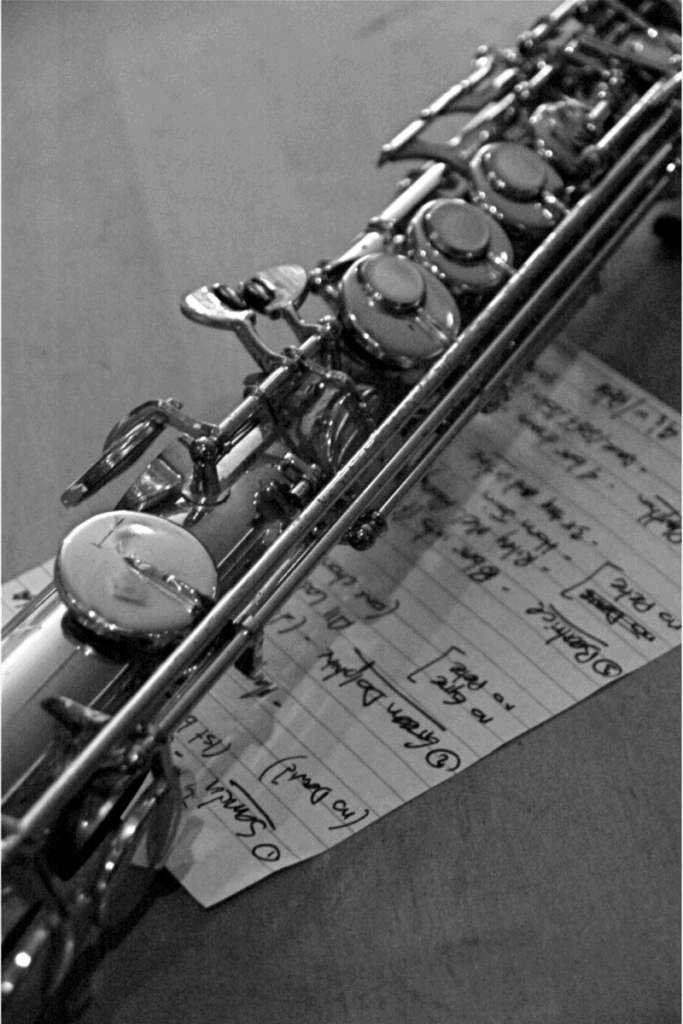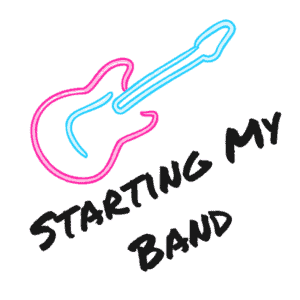Preparing the set list for a musical performance is the first step to having a successful show. Therefore it’s crucial to apply a certain routine and to understand what is needed to deliver the perfect concert.
When preparing your set list you should find a balance between focusing on the crowd, promoting your music, and feeling comfortable on stage. Once this is achieved, you will find it easy to adapt and change your set list with new songs.
Of course, it will differ from each set length, but the key elements stay the same for most musical productions. Let’s jump into the elements, and think about how you can implement them to craft your set to perfection.

Feeling Comfortable on Stage
After doing a survey with about 50 musicians, the main outcome was to first find your feet and become comfortable yourself first.
When you’ve completed the sound check with an empty venue, take note that the acoustic of the venue will change drastically depending on how full the venue will become. Therefore it is recommended to start with a song that you played for the sound check so that the sound engineer can still make minor adjustments. Preferably also a song that your band knows very well and which will make the crowd curious.
In this manner, you’ve placed your comfort and sound quality at the top which lays a solid basis for the rest of your performance, and also still takes the crowd into consideration. After playing this song, the band and sound engineer will be happy and relaxed.
For my band, that was usually the song that appeared as the first track on our album. We knew that song like the back of our hands. It has a nice balance between the instruments, some guitar solos, and a perfect chance to balance the vocals and backup vocals.
By the way, I previously wrote a post about a Successful Sound Check for Bands if you are ready to up your game.

Promoting Your Own Music
For New Original Tracks
One is always eager to promote and play your own tracks, especially when they are new and you feel excited and really proud of them. I want you to understand this from a neutral perspective: For someone in the crowd, it is easier to enjoy the old content that they are already used to.
Your audience would still need to learn your new songs. You can manage this by teaching the melody and letting the crowd sing to the new music. If this routine is successful, you have found the method of introducing the new music to your audience.
My recommendation is to introduce no more than one unfamiliar original song to your audience at a time. This will intensify the impact for the next day. Always think about how you can make an impact for tomorrow. You want your audience waking up the next morning, still humming your new track, asking when the release date is. Only then, the introduction of your new song to the audience was a success.
For Known Original Tracks
In this category, it is important to think about balancing your set. Ideally, the 1:2:1 balance ratio has been successful. For example, one upbeat, two averaged beat songs and one ballade. Taking all the other aspects into consideration to see what type of songs you should add.
This is also the category where you will think of an encore song. One that will keep your audience waiting and shouting until they get the songs that they adore and came to hear.
When I put my crowd hat on, I loved songs being performed a little differently than what I am normally used to. This makes it worth it for me to attend live shows. I get the value for my money if a band doesn’t only cover their own music, but instead does something different to it.

Focussing on the Crowd
Keep an open mind
It is extremely important to keep an open mind and also be able to read the crowd a little bit. If they are there for your music, obviously you will keep playing your original music that the audience is already acquainted with.
When my band got signed as a newcomer, our label kept requesting us to keep playing more covers until our following got bigger and our originals were what filled the venues. The expectation was to have 60% covers in our set to make the audience (which includes regulars at the venue) familiar with our sound. For an original band, this was challenging to reach because we were much better at performing our own music and perhaps had less passion for playing covers.
We agreed to settle on no more than 50% covers, which to us was still too much. We really searched in depth for popular songs that fit our style and that we could make our own. After the first year of fine-tuning some of the covers, the public started to also request these songs. They liked our version of these songs even better than the originals. And with these reactions, we became more adaptable to playing covers.
Our label loved them and we also had two of our cover songs recorded and released on our albums. From there, the “original cover songs” also got placed on various compilation albums in their various categories. It became so successful that the original artists contacted us to give us their blessing and respect for the way we fine-tuned their songs to fit them into our style.
Be flexible
You will need to adapt or change a few songs around spontaneously. This becomes much easier with experience and knowing your band members. If a guitar string needs to be replaced or a drum shell got broken, it is handy to have a card in your pocket when you need to play a solo song or entertain the crowd for an unexpected break in your set. The challenge is not always knowing for how long you should be able to hold on.
Normally an interesting story about what brought the band together or where the inspiration for the songs came from works quite well. If you tell jokes on stage, make sure it doesn’t offend any person. Keep it clean. Remember we want the audience to remember us 😉
Another solution could also be to use this time for a bit of promotion. Where you are performing next, and how people can follow you. If you have some merchandise to hand out, this is also a good time to do so.
Suggested Set List for 1 Hour’s Performance
To perform a normal set of an hour, minus the setting up and leaving the stage normally leaves you with approximately 45-50 minutes from start to finish.
Here is a general set list for a rock band playing for 45-50 minutes:
- Your sound check song. This song is familiar to the audience, but not quite your hit. Band members know it like the back of their hands. The “settling-in song”. Afterward, greet the crowd with a short introduction.
- The “Hype the crowd” song. An upbeat song to rise the excitement level of the crowd. I would play the second or third hit song here. Remind the audience to fill their glasses, and perhaps the bar has some specials. This will increase your likeliness to return to the venue in the future.
- Continue the excitement with the next track bringing it a tad down to the level of song 1.
- A song variation comes in here handy. Perhaps a cover or an acoustic change are ideas.
- Introduce a new song to the crowd and end up singing it together. You may spend some time here if you plan to repeat the chorus a few times. Make sure your audience is familiar with it once you move on.
- Your ballade comes in neatly here.
- Your longest song to introduce your band and thank the audience for their attendance.
- The current big hit fits in here.
- Have an encore song ready. An upbeat song worked well for us here, but many venues also like a band to end on a slower-beat song. As long as you make sure that you leave on a high note.
Depending on the length of your songs, this recipe might guide you to perform to your best ability. Keep an eye on the clock to respect the time of the organizers and adapt if you need to.
Thanks for reading and I hope it helps you on your journey to success!!

